Releases of information and consents.
Court orders and modifications.
Income statements and employment verifications.
These are just a few examples of the hundreds of forms that human services agencies rely on to operate every day. Forms are essentially an agency’s primary method of communication—both internally and externally. They also support the adage, “if it’s not documented, it didn’t happen.”
This is why many agencies have recognized the importance of digitizing their forms as a first step toward increasing their efficiency, timeliness, and service delivery capacity. Most importantly, when forms can be completed, signed, and submitted electronically and from anywhere, families can reach their goals in a timelier manner.
![]()
Overcoming the Emotional and Physical Burden of Paper Forms
The pitfalls of paper for human services agencies are well established, yet many organizations lack funding, resources, or proper justification to invest in technology and are forced to continue relying on paper-based systems and processes. This leaves room for error, creates duplicate work, delays services, and increases workers’ physical, mental, and emotional burden.
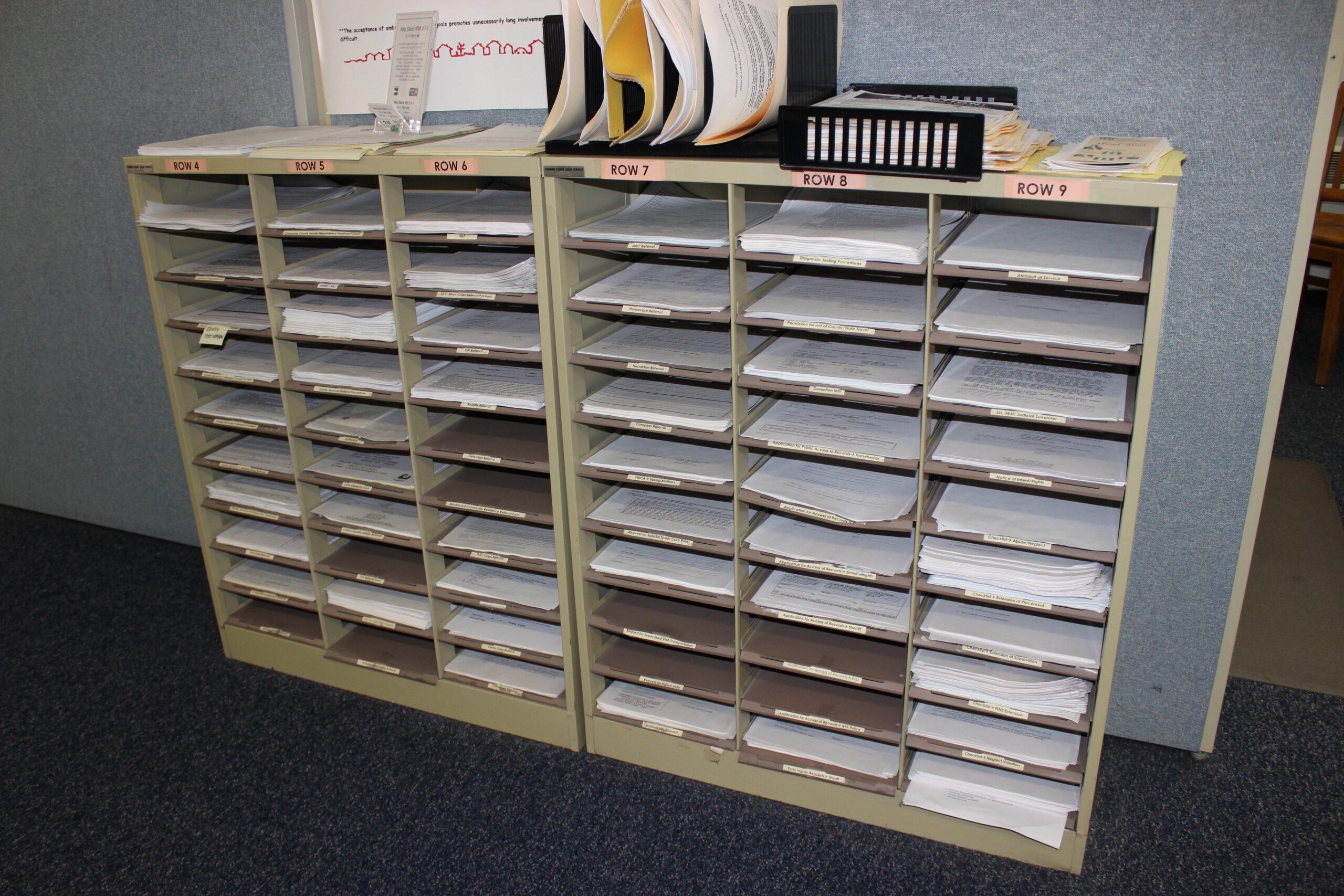 Anyone who has worked with physical forms can recall the overwhelming feeling of staring at an entire wall of paper and trying to remember which one to grab for a certain situation.
Anyone who has worked with physical forms can recall the overwhelming feeling of staring at an entire wall of paper and trying to remember which one to grab for a certain situation.
Since you don’t know exactly what you’ll be walking into when you get to a visit, you also have to make sure you’re prepared for every potential scenario you may encounter.
Don’t have what you need? That means driving back to the agency to get the form you forgot and then heading out to start the process all over again.
In the words of one caseworker from Colorado, “I had to be prepared for every possible circumstance and that was exhausting.” It’s easy to see how quickly this can cause workers to burn out, delay clients from getting the help they need, and make it difficult for your agency to meet your success measures.
Instead, consider these benefits of electronic forms and it’s easy to understand how they can help your agency overcome these burdens:
- Everything is stored electronically and in the same place, making forms easier to find.
- Workers have immediate access to any form they need, anywhere they work.
- Workers are prepared for every potential situation where a form is needed when they’re interacting with clients, families, and providers.
- Everyone is working from the most up-to-date version of each form, without creating duplicates.
- Work doesn’t get lost or delayed when forms can be viewed and worked on by multiple people.
In the words of one innovation manager from Ohio:
“Now we don’t ever have to print out a piece of paper. Our forms are completed directly in the system. We get digital signatures from our clients and we process forms without ever having to print anything out.”
![]()
Electronic Forms: The Key to Human Services Collaboration
Because forms are central to so many human services programs and processes, they should be easy to find, complete, and share. As you think about the features of electronic forms that can have the greatest impact on your workers and clients, here are a few things to look for:
Minimize duplicate work.
Being able to autofill client, case, and provider information into state and county forms saves workers from having to enter the same demographic information multiple times. Caseworkers should also be able to autosave progress so they can start a form on one device and complete it on another or when it makes the most sense—for example, starting a form on their desktop to finish on their mobile device with a family later.
We often hear from customers that these features allow them to complete forms in five to 10 minutes, compared to 30-45 minutes when they have to rely on manual, duplicate data entry.
 Streamline external collaboration.
Streamline external collaboration.
Workers need clients and providers to complete and sign forms, which can take days or weeks when relying on paper-based processes. If the form is digital and can be shared through a secure portal, it can be completed in real time instead—no matter where the worker, clients, or providers are.
This allows workers to obtain critical information or begin services for their clients as soon as possible and when they’re most engaged, which sets them on a more immediate path to success. One customer said this ability to complete and exchange digital forms with clients and providers helped them cut turnaround time from months to minutes.
Increase internal visibility.
Supervisors and workers alike need visibility into their team’s cases to support better internal collaboration and work sharing. This is why it’s important to be able to see and hand off in-progress forms, assessments, and plans—regardless of who started them.
Think about when someone is unexpectedly sick, goes on vacation, or leaves the agency. No work is lost, delayed, or duplicated when team members have access to forms that someone else has already started and can route them to the right person to finish.
Features like these are especially important during times of high turnover. Not only does it help the agency save time and maintain compliance, but it also improves the client’s relationship with the agency when they don’t have to retell their story or complete the same paperwork multiple times, because new workers can pick up seamlessly from where the last one left off.
 Make everything searchable.
Make everything searchable.
A tool that leverages next-gen technology like optical character recognition (OCR), machine learning, and natural language processing (NLP) can take digital forms one step further by making them text searchable once they’re complete. This allows caseworkers to search for information in their forms much like someone would use Google to search for a specific item on a restaurant menu.
For example, a worker could search a case file for referral forms to see what services have already been provided or provider release forms and licenses to ensure they’re still valid. They can also search for specific people or keywords mentioned in assessments, reviews, and other case planning forms.
Turn input into insights.
With the right tools, forms can be a treasure trove of data that agencies can use to identify trends, target services, and allocate resources. For example, if you could run a report that looks for the expiration date on all the digital releases of information you’ve collected for all open cases, you can improve quality assurance and work to ensure no lapses in collaboration.
Similarly, you could look at the data from digital referral forms to understand if a specific zip code or neighborhood needs preventive services. There are a lot of possibilities with reporting that start by simply filling out forms electronically and storing them in a logical way.
![]()
Additional Forms Features That Add Value for Caseworkers
It’s also important to look for a tool that can evolve and grow as your workers request new ways that technology can support their work. For example, here are a few features of the Forms module in our software Traverse that we’ve added or have in progress based on workers’ feedback:
- Copy and create. Another feature that can help workers save time is the ability to copy an existing form, update the information they need, and then create a new version to finalize. Think about how often workers have to fill out the same form multiple times throughout the lifecycle of a case, even though only some of the information has changed—for example, transportation forms, foster care licensing forms, individual service plans, re-authorization of services, annual assessments, or placement packets. This type of feature saves workers a ton of time and minimizes the chance for errors.
- Exact match. The way a community partner, state, or federal form looks when it’s completed and stored in the file matters. In fact, we’ve heard frustration from many workers because courts, schools, hospitals, and service providers have rejected forms in the past that weren’t formatted properly. Exact match forms optimize how caseworkers enter information. The completed electronic version looks like the original forms provided by partners.
- Growing text boxes. Think about all the times your workers have had to write notes in the margin of a paper form because they didn’t have enough space. Digital forms with growing text boxes that allow workers to add as much information as they need free them from the restraints of having to fit everything on an 8.5 x 11-inch piece of paper.
- Required fields and signatures. Consider an eligibility form that has required fields. On paper, someone can inadvertently skip a required field, which would then stall the worker’s ability to move that application forward. Instead, requiring that field to be completed on a digital form before it can be finalized minimizes this chance for error. Similarly, we lock assessments, plans, and forms once signature(s) are applied, plus lock form fields that agency staff has edited before sharing with authorized collaborators so that they can’t overwrite any data in those fields. Locking fields once a signature is applied also helps build trust with clients and legal partners.
- Redaction. Workers may need to redact information on forms and other case content for several reasons—think case audits, court orders, or needing to protect client information when collaborating with external partners (For example, Mandated Reporters need to remain anonymous outside of the agency). Traverse users will soon be able to redact names and identifying information from their finished forms to support this need.
![]()
Human Services Agencies Share How Electronic Forms Help Caseworkers
Our customers completed 679,000 electronic forms in Traverse in 2022. If you compare the average time savings of ~25 minutes per form (5 minutes with a digital tool vs. 30 minutes without one), that totals almost 17 million minutes, or 283,333 hours, saved throughout the year.
That equals over 32 years’ worth of work cut down into one. For comparison, what else can you accomplish in 32 years?
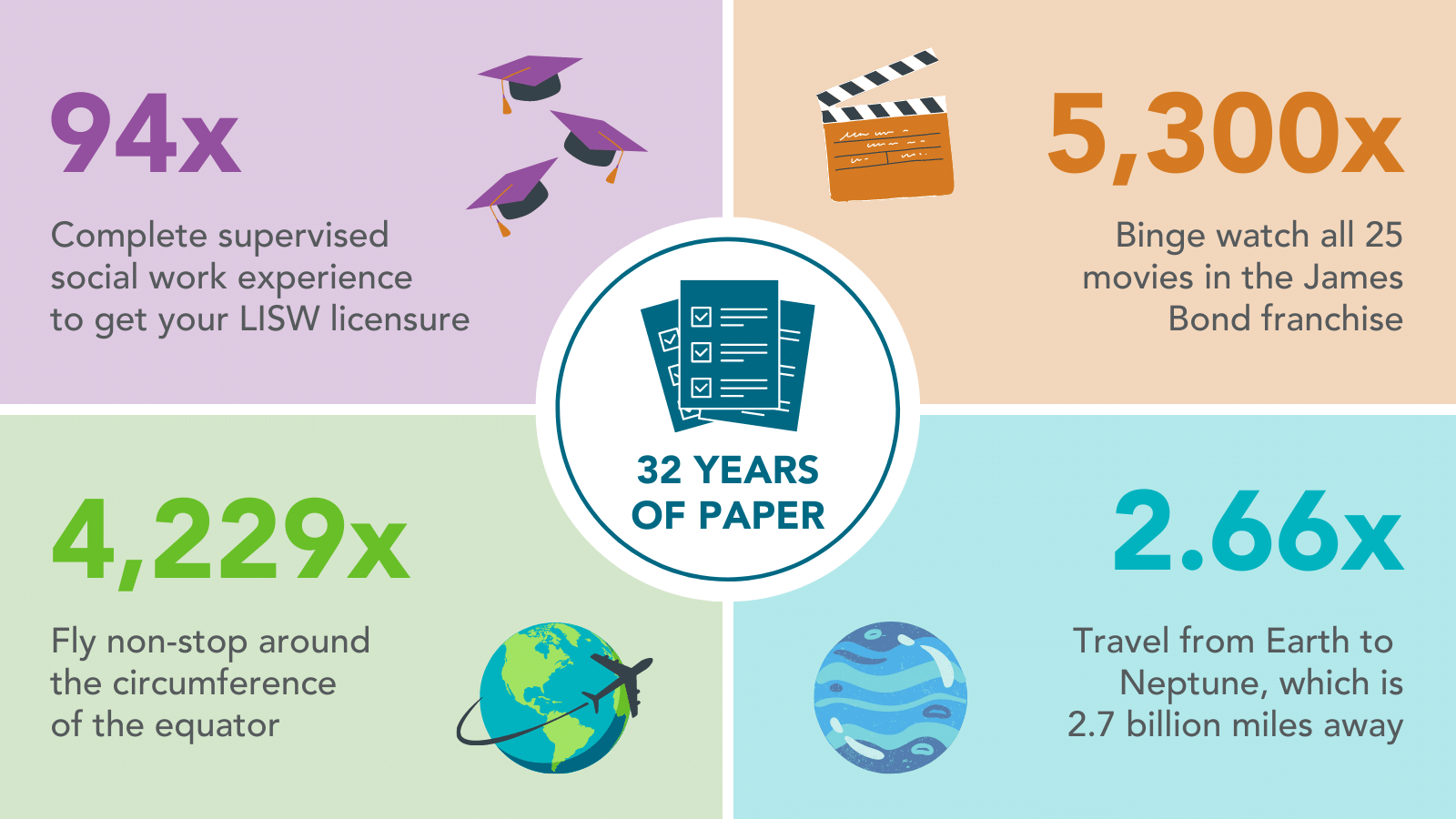
If the time savings alone aren’t enough, here are some results and benefits we’ve heard from customers who have digitized their forms and streamlined manual paperwork processes.
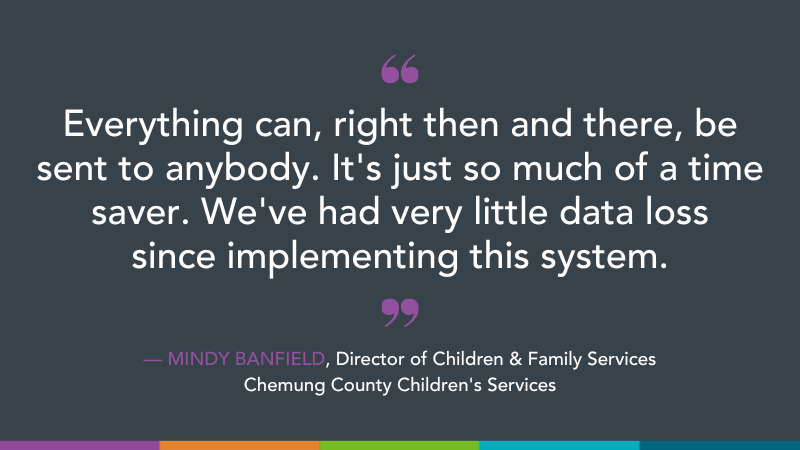
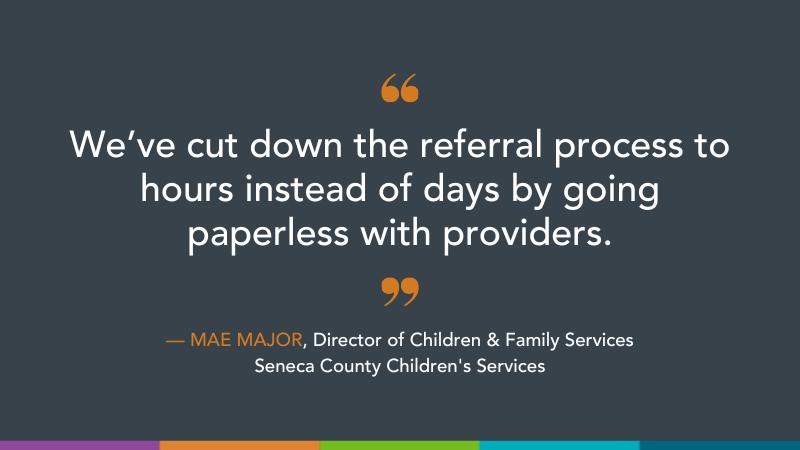
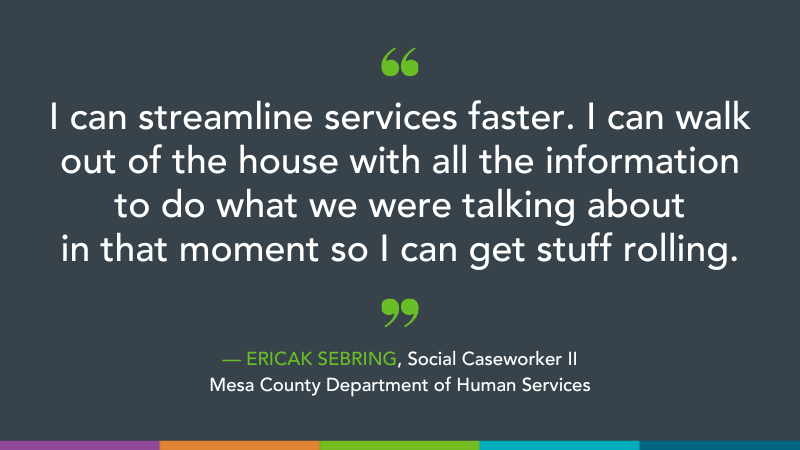
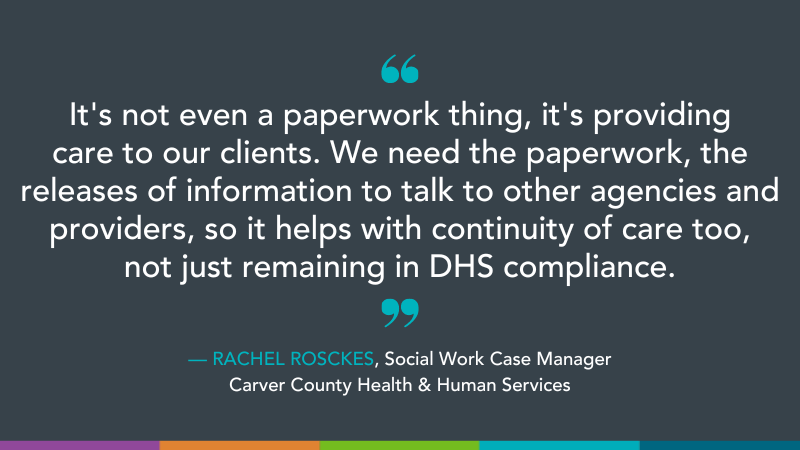
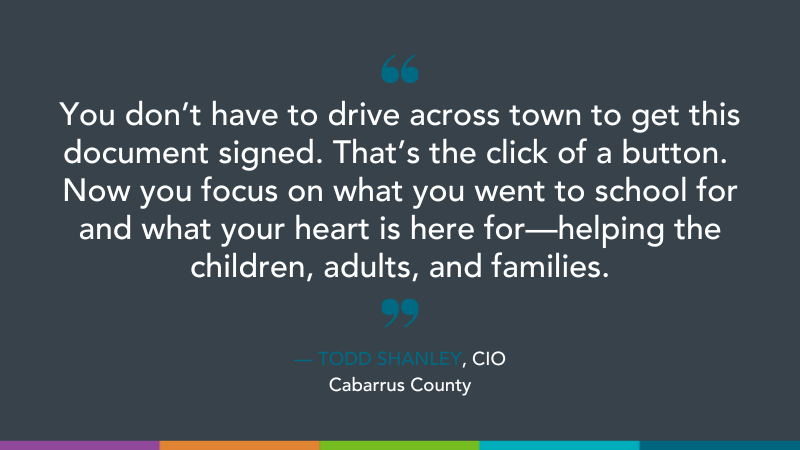
![]()
Ready to Make the Move to Electronic Forms?
Going digital may seem like a big undertaking, but it doesn’t have to be. Thinking about converting your forms? Here are some steps we recommend for getting started on the path to success:
Find all your existing forms.
Think about all the different places forms are saved or stored throughout the agency. This includes both paper forms (on the wall, in a cabinet, on someone’s desk, etc.) and electronic versions (in an existing system, in an email, on a state website, on a desktop, etc.). Additionally, think about all the different versions that have been created or modified by individual workers over time.
It’s a critical first step to have a complete picture of ALL the forms you’ll want to digitize to maintain consistency moving forward. Anything that’s missed increases the chance that someone will revert to “the old way” of completing their forms instead of adopting your new tool.
Don’t overlook key details.
If forms are your agency’s primary method of communication, they need to be accurate and consistent to convey your professionalism. Once you can see and compare all the versions of each form, make sure you know which one is the most up to date.
Does it have the right letterhead? Is the county/state leadership information still accurate? Is the terminology on the form inclusive? Think about the experience you want someone to have when they engage your agency and let that guide your process.
Start to evaluate business processes.
Effective organizational change management will be key to integrate a new digital solution for managing forms into your business processes. Once you have a complete view of all the forms that exist, start to think about which ones are still needed and which can be retired when you go digital.
Keep in mind this is not a task you need to complete entirely on your own, as a good technology partner will help you determine the forms your agency should use, design business processes that add value, and provide best practices to support the transition.
Remove the risk factor.
Knowing what motivates your workers to accept or reject change will increase your chances of long-term success. How can you help staff embrace something new? How can you best reach the workers who are most comfortable and attached to using paper? Is it clear who will manage and champion your efforts? How will decisions be made and communicated? These factors should be top-of-mind as soon as you start planning a change to keep things running smoothly.
Engage your collaborators.
As you think about how things will change, don’t solely focus on your agency. Consider your whole wrap-around community of partners, providers, and even clients who will be affected too. Start talking to these collaborators now about how your agency’s investment in an electronic system will change their experience interacting with you. Help translate the benefits of a new tool in a way that they see how it can positively impact their goals and desired outcomes too.
![]()
Reach out if you’re interested in going digital with Northwoods or watch our Traverse Feature Preview videos to learn more.


